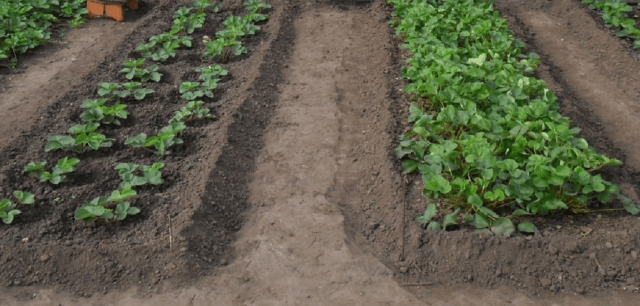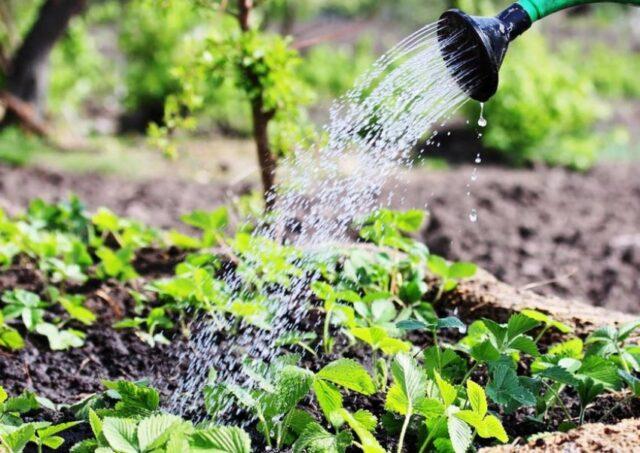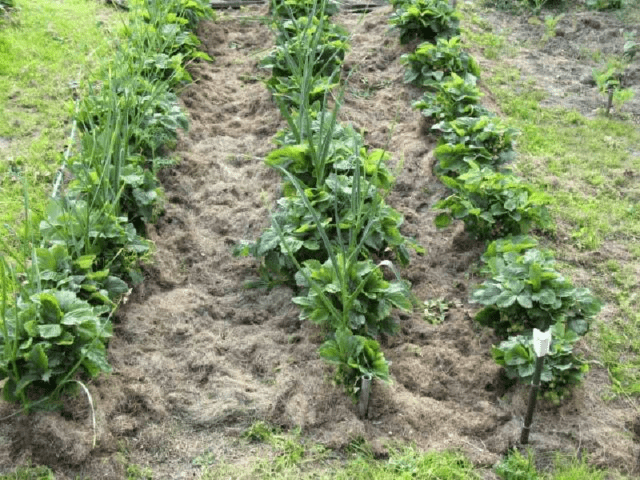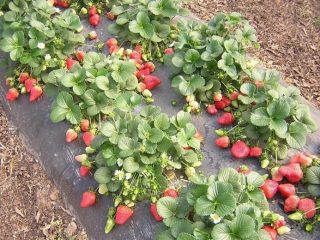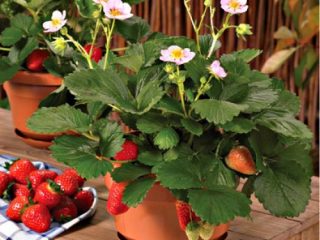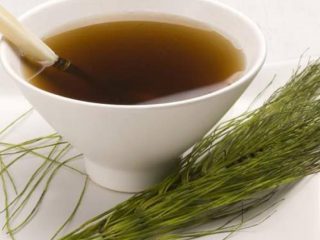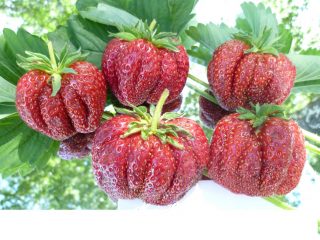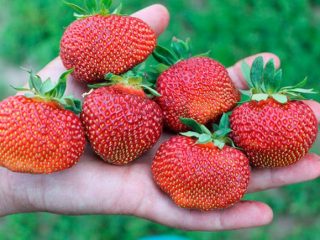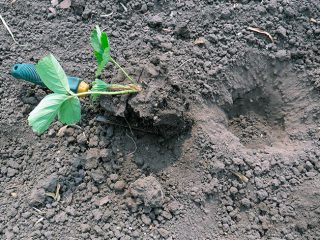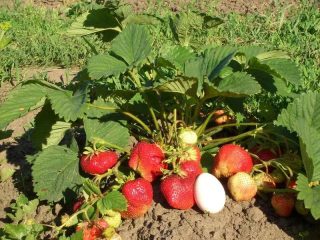Content
Strawberry Great Britain is a late variety with large berries. The culture is frost-resistant, so it is grown in most parts of Russia. Gardeners love the berries for their beautiful cherry-burgundy color, unusual taste and pleasant aroma.
History of selection
The origin of strawberries in Great Britain is not known for certain. The Chamora Turusi variety was involved in its creation. The resulting variety differs from its predecessor in its later ripening period and the interesting taste of the berries.
Characteristics and description of UK variety strawberries
Strawberry Great Britain is a productive variety with large fruits. The culture has a distinctive feature: the first berries on the cluster resemble a cockscomb. The bushes are powerful and well developed. The foliage is rich green in color and large.
It grows in one place for six to eight years without transplanting. But after four years, the soil is greatly depleted, so it is recommended to change the bed or fertilize the soil.
Appearance and taste of berries
According to gardeners, UK strawberries have a pleasant taste. Tasting score – 4.9 points out of 5.
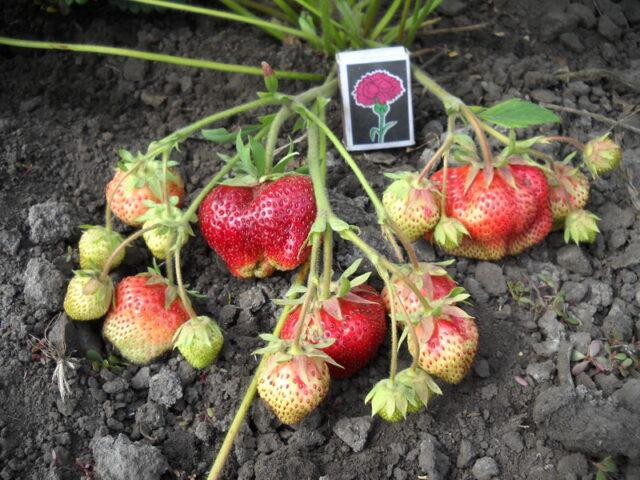
The first berries on the fruit cluster of the Great Britain variety are formed large, the rest are medium and small
The shape of the strawberry is regular, conical. On young bushes there is only one large ovary. The color of the berries is cherry-burgundy, the flesh is dense and red. The taste and aroma are pronounced.
Ripening period and yield of strawberries UK
If the bushes are planted in spring, the first fruits begin to be collected in the second decade of July. The process lasts until September, and in the southern regions continues into early autumn.
Under favorable growing conditions, about 4 kg of berries can be harvested from each UK strawberry bush. With insufficient watering, the figure is reduced to 1-2 kg.
Frost resistance
The Great Britain variety is grown in all Russian regions. Strawberries have good frost resistance - down to minus 15-20 °C. The variety is not afraid of return frosts. To avoid freezing, in the northern regions, strawberry plantings are mulched and covered with spruce branches or spunbond.
Resistance to diseases and pests
The variety is not characterized by increased resistance to infectious diseases. In rainy summers it may suffer from gray rot. The main signs of damage: the appearance of brown or dark gray spots on the berries and leaves. You may notice a fluffy, mouse-colored coating. Ripe fruits become watery and lose their pleasant taste, while unripe ones dry out.
Ramulariasis affects petioles and peduncles. Round reddish-brown dots are visible on the leaf blades, which gradually change color to whitish with a dark border.
With brown spot, old leaves are affected.Reddish-brown spots appear on them, which gradually turn black and become covered with fungus. The affected leaf blades dry out and die.
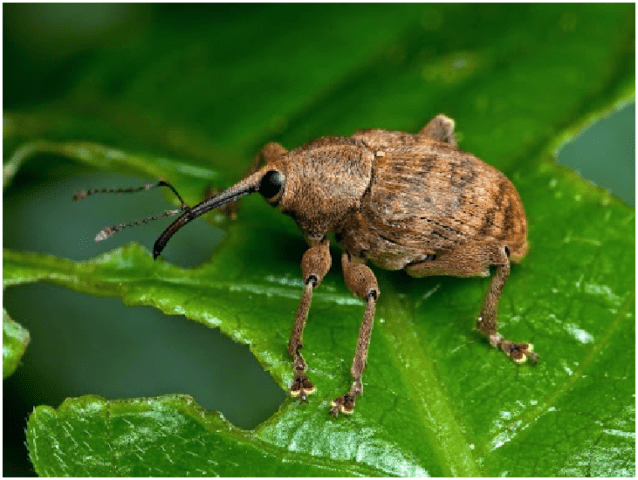
The main pests of strawberries: slugs, weevils, nematodes, strawberry mites, ants
Advantages and disadvantages of the variety
UK strawberries have a lot of positive qualities. But, like any plant, the variety has disadvantages.
The pros and cons of culture are presented in the table.
Strawberry UK | |
Advantages | Flaws |
Large fruits | Weak resistance to spotting and rot |
High yield | Requirement for watering |
Normal transportability and keeping quality | The need for fertilizing |
Good tasting score | Late maturation (many consider this point to be a positive quality) |
Attractive appearance | No pest resistance |
Frost resistance |
|
Landing
Before planting, care must be taken to prepare the soil. When choosing a site, pay attention to the following points:
- Potatoes and eggplants will be bad neighbors and predecessors for UK strawberries. The presence of dill, parsley and other greens is permissible in the garden bed. Marigolds, which are classified as repellent plants that repel pests, will be good neighbors. Strawberries will feel fine if carrots or beets grow near the garden bed.
- You can disinfect the soil using a solution of ammonium nitrate. This is done in advance, several weeks before planting the strawberries. Growing lupine on loose soil will help naturally disinfect the soil.
- For strawberries, choose fertile soils with good drainage. If the water stagnates in the area, the formation of earthen mounds should be considered for planting crops.
- In depleted areas, humus is added for digging. The garden bed is plowed and watered.
Strawberry planting technology UK:
- The holes for strawberries should be shallow, but sufficient to accommodate the rhizomes.
- When planting, adhere to the following dimensions: 30 cm between holes in a row, 40-60 cm between rows.
- If humus was not added before planting, fertilizers with microelements are added to the soil.
- Before planting, strawberry roots that are too long are shortened slightly using pruning shears.
- The bush is placed in the hole, the roots are straightened.
- The planting hole is covered with earth.
- The soil is carefully pressed down with your hands.
- The bushes are watered with settled water at room temperature.
- After the water is absorbed into the soil, the plants are mulched.
How to care
Great Britain strawberries are not a very capricious plant, but to get a good harvest you need to know how to care for the crop.
Main events:
- Regular watering of the soil. The UK strawberry root system is close to the surface, so it dries out very quickly on dry days. For continuous watering, you can install a drip irrigation system. If this is not possible, then water the strawberries daily on hot days. For 1 m² of area you will need 7-10 liters of water. On cloudy days (without precipitation), 5-6 liters are enough for the same area. In spring and during the cool period - three moistenings of the soil per week, 5 liters per 1 m². If it rains, watering is stopped. During flowering, UK strawberries are best watered early in the morning.
In extreme heat, the crop is moistened in the evening, after sunset.
Important! Mulching or covering the beds with agrofibre can reduce the amount of watering. - Timely application of fertilizers. This is done several times a season: after planting, during the period of flowers and ovaries, before the onset of cold weather. In spring, formulations with phosphorus and potassium are used. The introduction of mullein is possible in the second year after planting. This organic compound is very concentrated, so it is only used in diluted form for UK strawberries. Phosphorus-potassium fertilizers are used throughout the warm season. For 1 m² of area you will need 20 g of complex product.
- Prevention and treatment of diseases, getting rid of pests. The following products are used to treat bushes: Bordeaux mixture, iodine, hydrogen peroxide. To eliminate pests use Actellik, Karbofos, Iskra. Strawberries are most often grown for children and grandchildren, so they try to do without chemicals. When slugs appear, they are collected by hand, and the soil between the rows is covered with pine needles, crushed egg shells, and walnuts.
Repellent plants will help protect beds from pests: marigolds, garlic, onions
- Weeding, mulching. Weeds can choke UK strawberries and significantly reduce yield. To prevent this from happening, the grass in the beds is weeded regularly. Mulching helps reduce weed growth and also prevents the soil from drying out. Wood shavings, grass clippings, and straw are used as mulching materials.
- Loosening is a procedure necessary to ensure that the roots do not rot and receive a sufficient amount of oxygen.Carry out after watering or heavy rains.
- Pruning of the whiskers is necessary to prevent the planting from becoming thicker. The first time this is done is in the spring, then the berries will form large. The shoots are pruned again after fruiting. If strawberries need to be propagated, then part of the mustache is left. They should have no more than three sockets.
- In the fall, strawberry beds must be removed. Damaged and dried foliage is trimmed from bushes. The beds are watered and treated with herbicides. To protect against frost, mulching is carried out. The best material for this is pine litter. If it is not available, use straw, wood shavings, and tree leaves.
How does it reproduce
Great Britain strawberries can be propagated by dividing the bush, tendrils, and seeds. Most often, gardeners use the layering method. The mustaches are directed to a well-dug bed and the largest rosettes are fixed, the rest are cut off using pruning shears. The procedure is carried out in the summer. Next year the new bushes will bear fruit.
Conclusion
Strawberry Great Britain is a large-fruited variety with a late fruiting period. The berries are tasty, with thick skin, so they can be transported. The variety is grown not only on personal farmsteads, but also for industrial purposes.
Reviews from gardeners about strawberries UK
